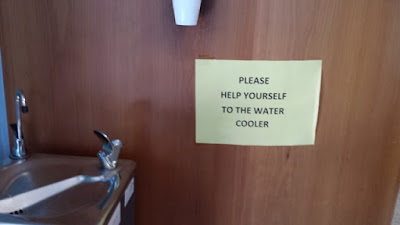My copy of the new facsimile edition of Ladislav Sutnar’s
Visual design in action arrived a few weeks ago, and there’s a London launch on
26 November at a meeting of the
Information Design Association. It’s a
beautiful and faithful reproduction of the 1961 classic, down to the multiple stocks and
beige buckram binding.
I came to Sutnar very late – around 2008 I think. For
someone who has spent his life promoting, teaching, researching and practising information
design, it was embarrassing to find I had completely missed this extraordinary
designer who had used the term (and pioneered the practice) in the 1940s.
Sutnar didn’t just use information design as a synonym for
graphic design (as some early adopters of the term appeared to). In his
introduction to the book, he actually distinguishes between the two. While
visual design (he seems here to conflate this with graphic design) is about
visual patterns and structures that appeal to the mind and the eye… ‘The term
“information design” should be understood as the integration of meaning
[content] and visualisation [format] into an entity that produces a desired
action.’
That’s as good a distinction as you could hope for – there is
plenty of graphic design that’s great to look at but that ignores content,
users and effects.
Ironically perhaps, in view of this concern for meaning, Visual design in action is easier to
look at than to read. The examples are quite stunning and it is inspirational,
astonishing even, to see wonderful modernist design (the sort that actually
works) applied to a wholesale trouser catalogue, among other things. But the
text – somewhat cryptic and set in unsympathetic rectangles of italic type – is
quite hard to follow if you are looking for a closely reasoned argument.
Instead, I find it a rich source of quotable quotes to hang
on to – nuggets like ‘the memory value of a simple, clear shape to facilitate
quick recognition’ or
‘…text, tables, graphs, drawings and pictures. All these
elements must be composed in space in such a way that they work together as
smoothly as the gears in a machine.’
This last quote speaks to Sutnar's concern for visual flow, and his pioneering use of double spreads – now being chased out of town by the current obsession with responsive design.
Sutnar’s theory of information design is best expressed here:
‘The performance standards to meet the requirements for
functional information flow necessary for fast perception are /1/ to provide
visual interest to gain attention and start the eye moving, /2/ to simplify
visual representation and organization for speed in reading and understanding,
and /3/ to provide visual continuity for clarity in sequence’.
Today we might speak of engaging the user, making
information readable and understandable, and supporting navigation. It’s
actually quite a rich model once you start thinking through the techniques and
skills needed at each stage – a combination of graphic design, information
design, and UX.
Sutnar's work has that timeless quality you find in the best of modernism: to our eyes the exhibition designs depicted here are completely contemporary, while the adding machines displayed look like museum pieces.
Visual design in
action was published towards the end of Sutnar’s career following an
exhibition of his work. He self-published it to exacting standards, and it’s
just been reprinted to the same standards by
Lars Müller on the initiative of Steven
Heller and Reto Caduff, using Kickstarter crowdfunding. Heller’s
1994 article in Eye magazine is the best introduction to
Ladislav Sutnar.
Look at it, read it and marvel.


















































